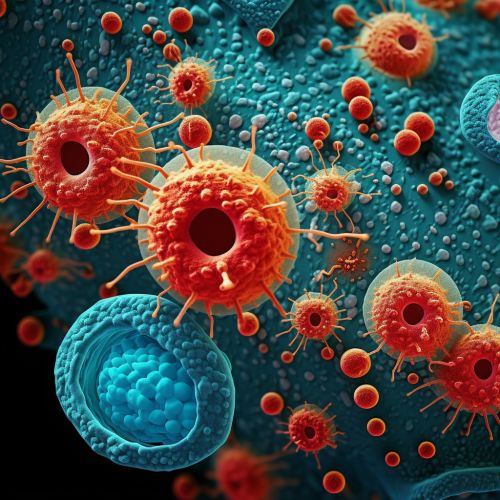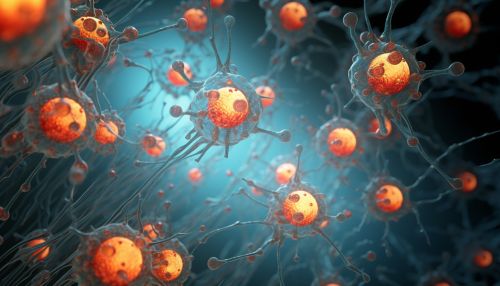Programmed Cell Death
Introduction
Programmed cell death (PCD) is a biological process that results in the death of cells in a regulated and orderly manner. This process is essential for the development and maintenance of multicellular organisms. PCD is distinct from necrotic cell death, which is an uncontrolled and often detrimental process.


Types of Programmed Cell Death
There are several types of PCD, each with unique characteristics and functions.
Apoptosis
Apoptosis is the most well-known form of PCD. It is characterized by cell shrinkage, nuclear fragmentation, chromatin condensation, and the formation of apoptotic bodies. These bodies are then phagocytosed and digested by nearby cells. Apoptosis is crucial for embryogenesis, immune system function, and tissue homeostasis.
Autophagy
Autophagy is a process that involves the degradation of a cell's own components through the lysosomal machinery. It provides the necessary building blocks for maintaining cellular functions and adapting to changing conditions. Autophagy can lead to cell death when it is excessive or uncontrolled.
Necroptosis
Necroptosis is a form of regulated necrosis. Unlike apoptosis and autophagy, necroptosis leads to cell lysis, causing the release of intracellular components that can trigger inflammation.
Pyroptosis
Pyroptosis is a highly inflammatory form of PCD that is often associated with pathogen infections. It is characterized by cell swelling, plasma membrane rupture, and the release of pro-inflammatory cellular contents.
Molecular Mechanisms
The molecular mechanisms of PCD are complex and involve a variety of signaling pathways and proteins.
Apoptosis Mechanisms
Apoptosis can be initiated through the intrinsic or extrinsic pathway. The intrinsic pathway is triggered by intracellular signals, such as DNA damage or oxidative stress, while the extrinsic pathway is initiated by extracellular signals, like the binding of death ligands to their receptors on the cell surface. Both pathways converge on the activation of caspases, a family of protease enzymes that carry out the execution phase of apoptosis.
Autophagy Mechanisms
Autophagy is regulated by the mTOR signaling pathway. Under nutrient-rich conditions, mTOR inhibits autophagy. However, under conditions of stress or nutrient deprivation, mTOR is inhibited, allowing autophagy to proceed.
Necroptosis Mechanisms
Necroptosis is regulated by the RIPK1-RIPK3-MLKL signaling pathway. Activation of this pathway leads to the phosphorylation and activation of MLKL, which then triggers cell membrane rupture and necroptosis.
Pyroptosis Mechanisms
Pyroptosis is triggered by the activation of inflammasomes, which are multi-protein complexes that respond to pathogen-associated molecular patterns (PAMPs) and damage-associated molecular patterns (DAMPs). Inflammasome activation leads to the activation of caspase-1, which then cleaves the pro-inflammatory cytokines IL-1β and IL-18, as well as the protein gasdermin D. The cleavage of gasdermin D results in the formation of pores in the cell membrane, leading to pyroptosis.
Role in Disease
Dysregulation of PCD can lead to a variety of diseases. For example, insufficient apoptosis can result in cancer, as cells that should die continue to proliferate. On the other hand, excessive apoptosis can lead to degenerative diseases, such as Alzheimer's disease and Parkinson's disease. Autophagy dysregulation has been linked to neurodegenerative diseases, cancer, and infections. Necroptosis has been implicated in inflammatory and ischemic diseases, while pyroptosis is associated with sepsis and autoinflammatory diseases.
Therapeutic Implications
Given the role of PCD in disease, it is a potential target for therapeutic intervention. For example, drugs that induce apoptosis could be used to treat cancer, while inhibitors of apoptosis could be used to treat degenerative diseases. Similarly, modulating autophagy, necroptosis, or pyroptosis could have therapeutic benefits in a variety of diseases.
